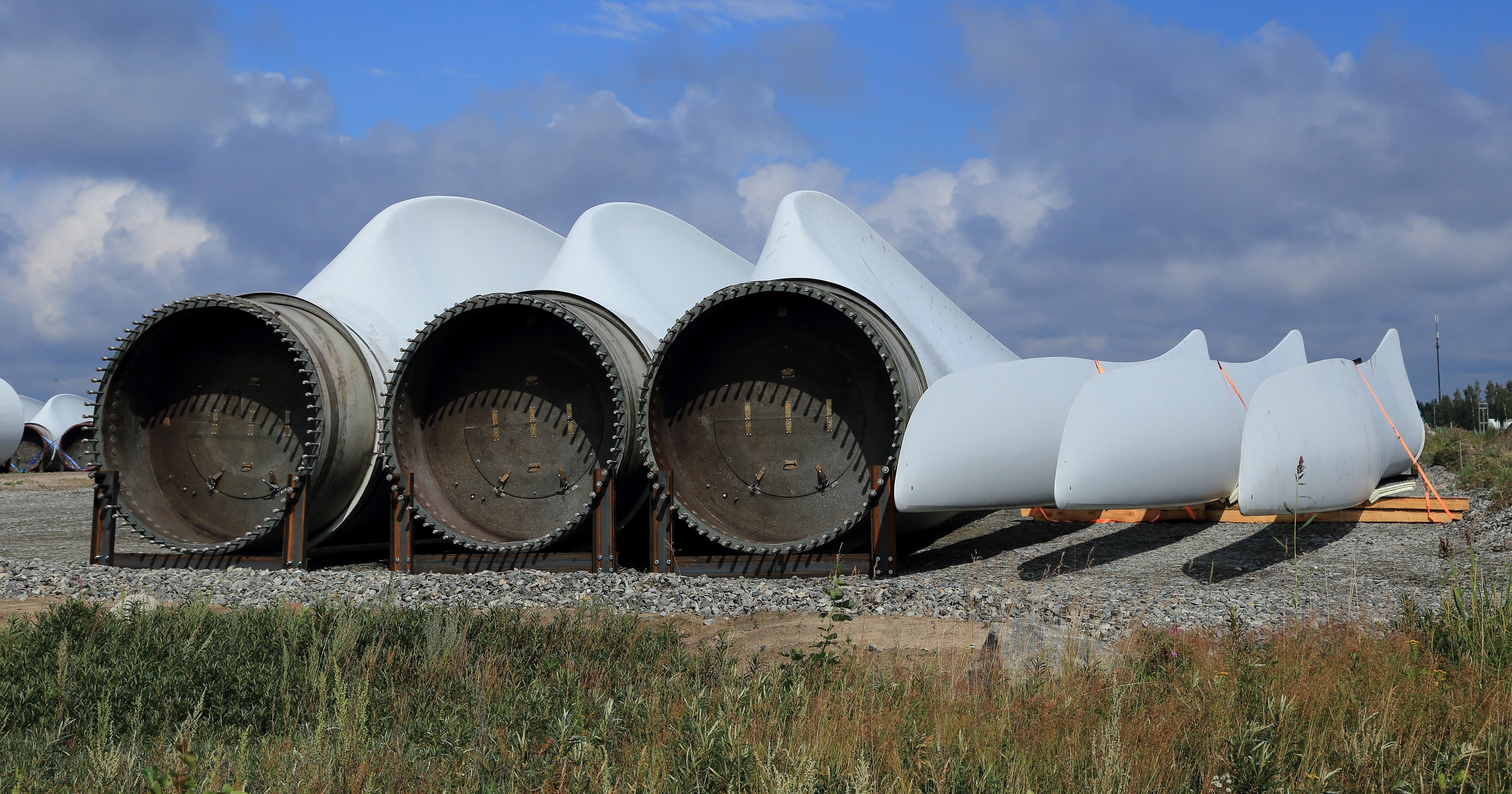Wind Blade Waste is composed of valuable resources that should be recycled to make the supply chain even more sustainable.
End-of-life management is challenging but crucial in order to meet the wind industry sustainability goals
BLADE DIMENSIONS INCREASING
| BLADE DECOMMISSIONING KICKING IN
|
- In five to ten years time, the number of decommissioned blades will be so high that it will be crucial to adapt the current waste processing system.
- The wind energy industry believes an EU landfill ban will accelerate the scaling up of recycling technologies, which in turn, will see the demand for recycled materials rise.
Several technologies could be scaled up to process the enormous volume of wind blades. Applications shredded composite material still need to be developed.
This broad range of new technologies need to be scaled up drastically to absorb high volumes of materials

ThermalPYROLYSISStrengths: - Pyrolysis gas/oil can be used as an energy source in processes or in chemicals production;
- Easily scaled up;
- Microwave Pyrolysis: easier to control. Less damage to the fiber.
Challenges: - Fiber product may retain oxidation residue or char (combine with gasification)
- Potential gas leakage from waste treatment chambers
CO-PROCESSINGStrengths: - Highly efficient, fast and scalable;
- Large quantities can be processed;
- No ash left over.
Challenges: - Loss of original material form;
- Additional energy needed to reach high processing temperatures
- Emissions of pollutants and particulate matter
GASIFICATION�(Fluidized bed)Strengths: - Recovery of energy and potential precursor chemicals;
- High efficiency of heat transfer.
Challenges: - Recovery of low-quality material;
- Economically viable at > 10,000 t/year;
- Process-related emissions
| ChemicalSOLVOLYSISStrengths: - Recovery of full length clean fibers;
- Recovery of resin which can be re-used.
Challenges: - Low efficiency;
- High energy consumption due to the high temperature and pressure
- Large amounts of solvents required, ecotoxicity from gas emissions
HIGH VOLTAGE PULSE FRAGMENTATIONStrengths: - Scalable to treat large amounts of waste;
- Low investments required to reach the next TRL.
Challenges:- Only laboratory- and pilot-scale machinery is available;
- Heavily decreased modulus of glass fiber.
| Mechanical
MECHANICAL GRINDINGStrengths: - Efficient and high throughput rates.
Challenges:
- Cost efficiency;
- Low quality of output. High content of other materials;
- Requires space and facilities to treat materials.
|
Companies and recent projects involved in the recycling or recovery of composites are based in North America, Europe and Japan
The industry’s ambition is to achieve full circularity with respect to blades
Today’s Focus is on recycling but the major manufacturers are now working on future eco-designed blades

- The ZEBRA project goal is to demonstrate on a full scale the technical, economic and environmental relevance of thermoplastic wind turbine blades, with an eco-design approach to get a 100 % recyclable wind turbine blade. The project has been launched in 2020 for a period of 42 months with a budget of €18.5 million.
- The shredded material can be used to make solid recovered fuel (SRF). Gasification of this SRF is planned on the GAYA platform of ENGIE.
Bibliography
[55] Joint Publication WindEurope, Cefic, EuCIA, 2020. Accelerating Wind Turbine Blade Circularity. Image from TPI Composites
[56] Values provided by blade manufacturer to ENGIE
[57] BloombergNEF, 2020. 35 MW Wind Turbines to Lower Material Demand.
[58] Marylise Schmid, 2020. End-of-Life Issues and Strategies (EoLIS), WindEurope Seminar, November 18-20 2020, Online
[59] ETIP Wind, 2020. How wind is going circular.
[60] Youtube, 2019. ENGIE Green : Démontage du plus ancien parc éolien de France à Port-la-Nouvelle (Aude).
